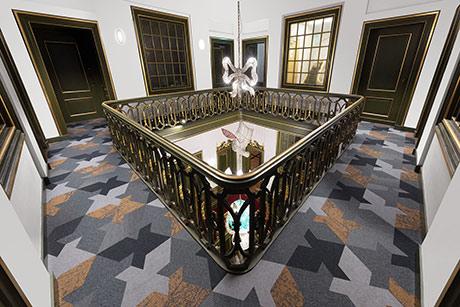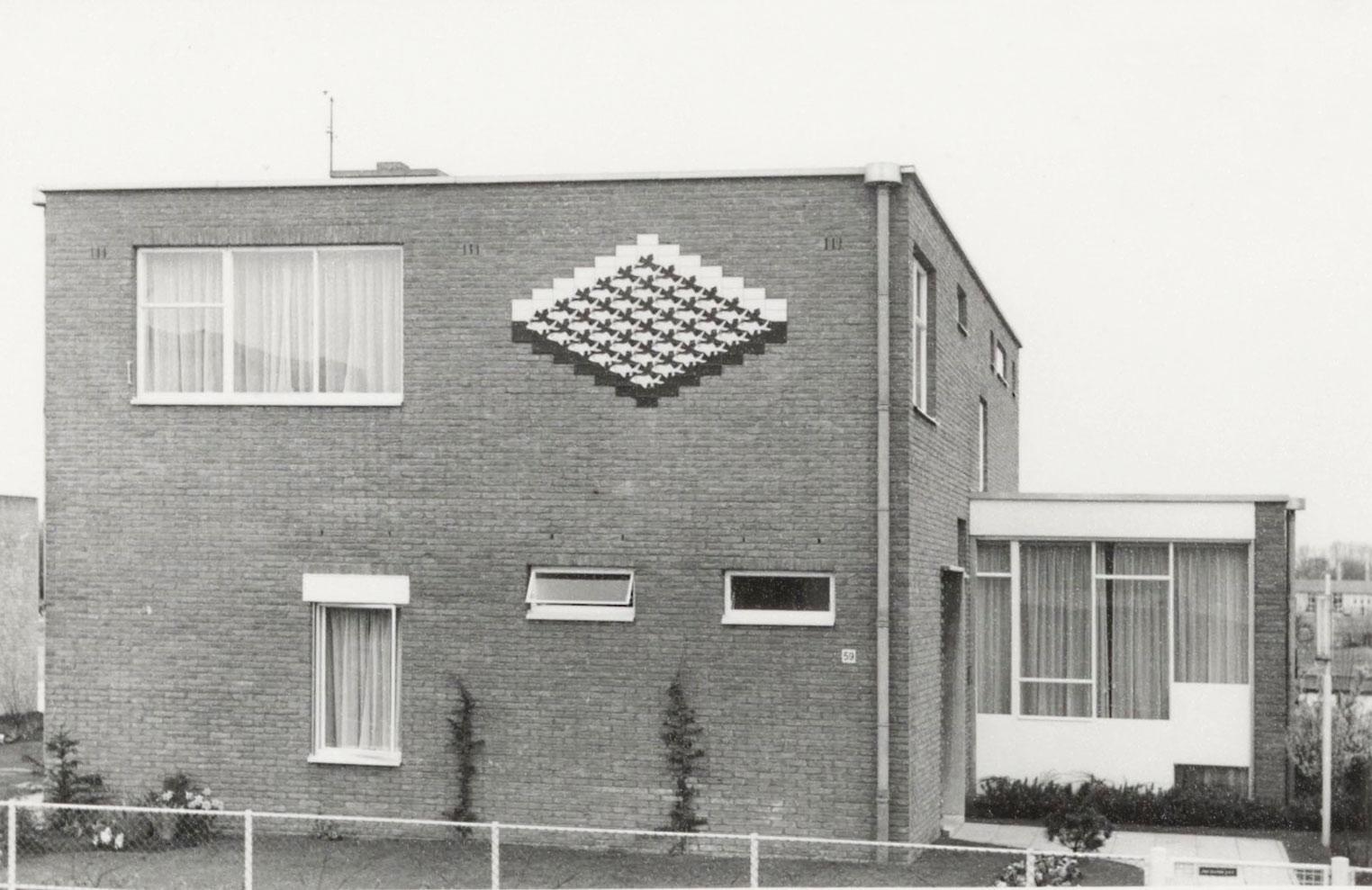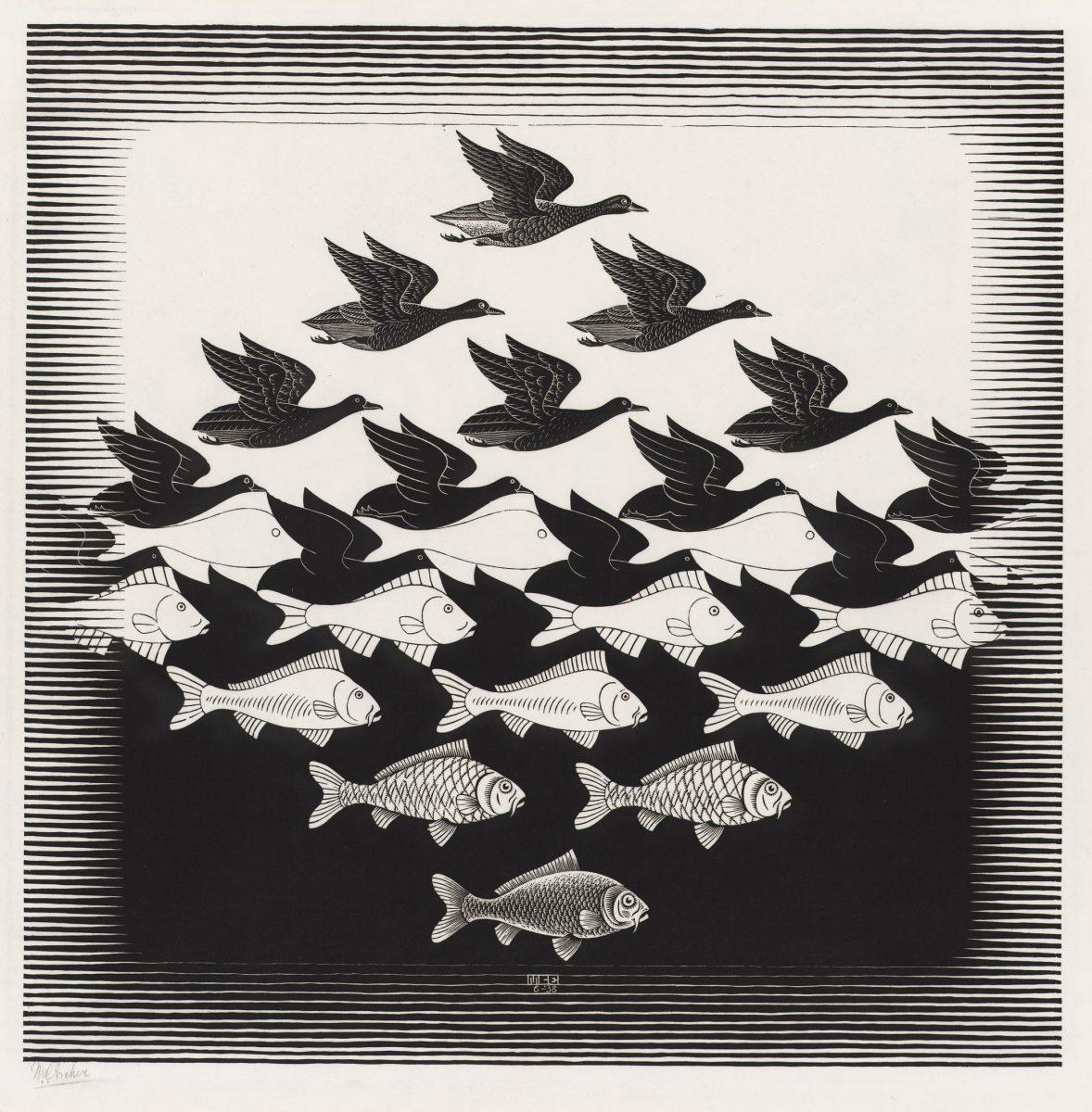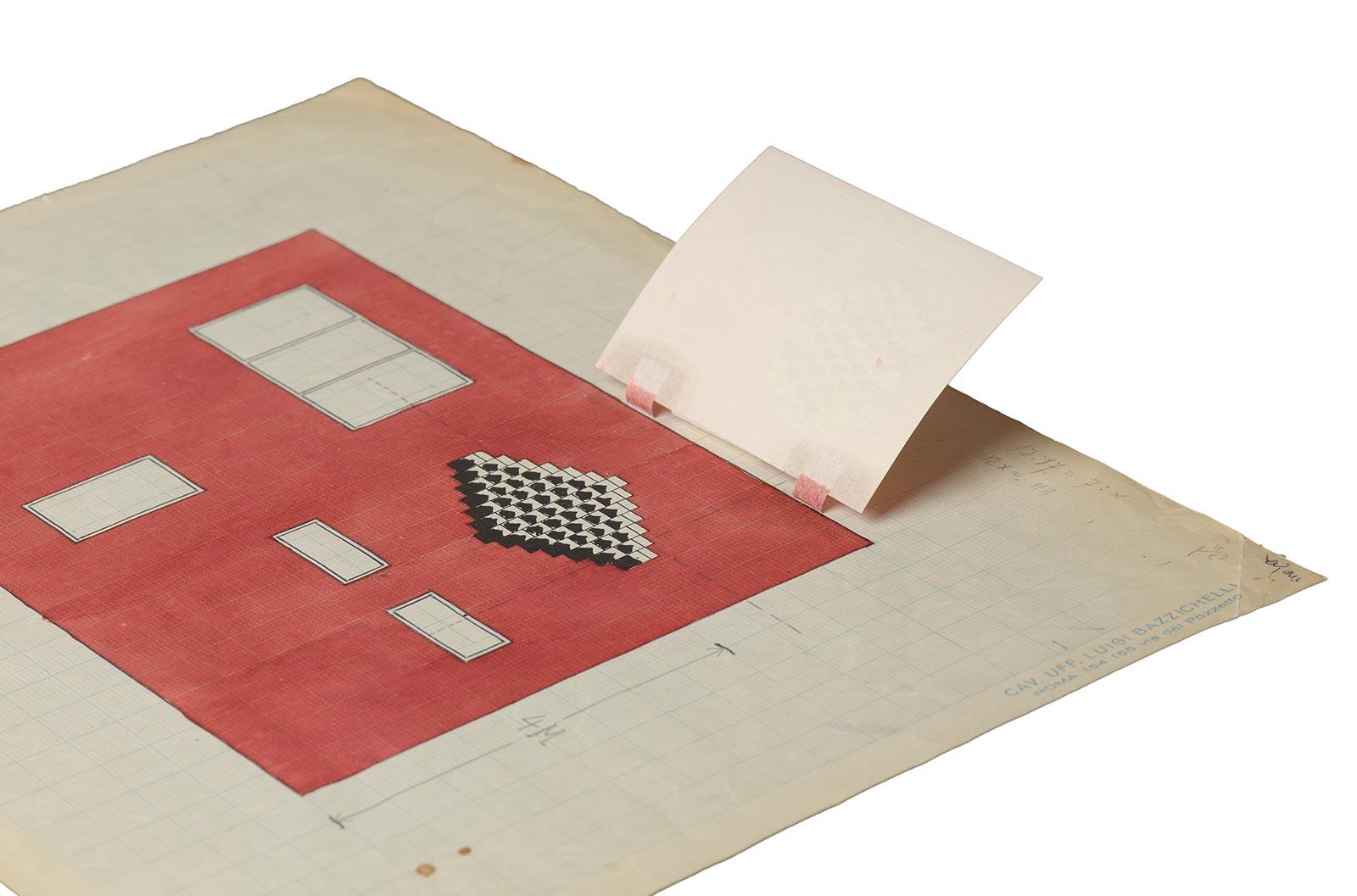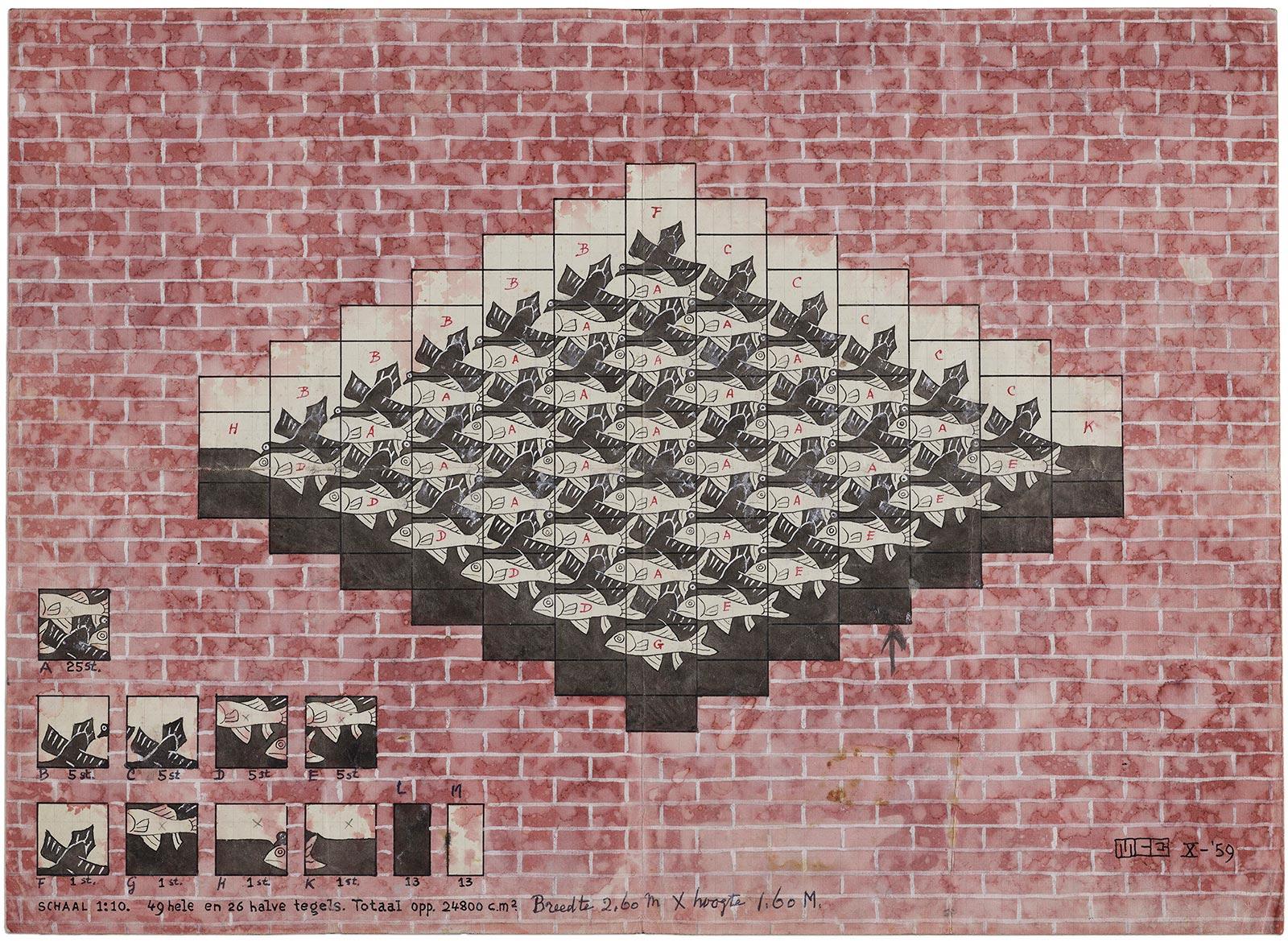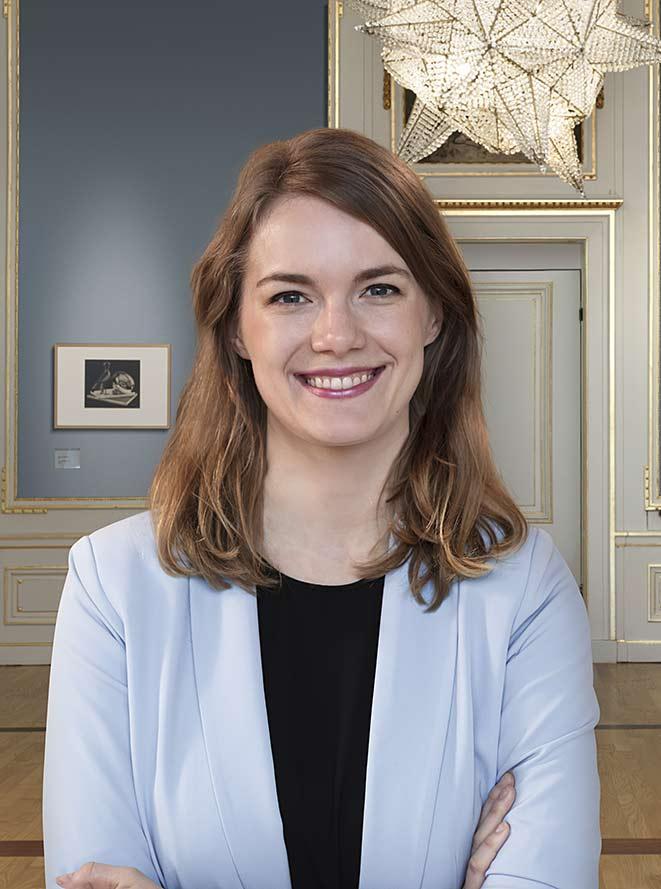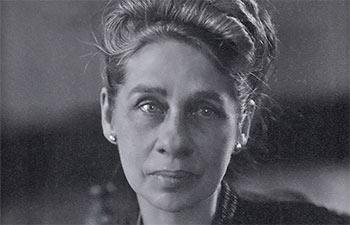Escher proposed to base the tableau on his print Sky and Water I, in which fish gradually metamorphose into birds. The diamond-shaped design would introduce a diagonal dynamic to the modern villa’s orthogonal lines and Escher’s tessellations would lend themselves well to an arrangement of tiles. Escher soon enlisted the ceramics factory De Porceleyne Fles (now Royal Delft) to make the tiles. He had collaborated with them on tiled columns for the Maris College in The Hague and would do so again a decade later for a project at a secondary school in Baarn.
After a process of several months, the tableau was delivered in the spring of 1960 and unveiled in the presence of the clients, the villa’s architect Lau Peters and Escher. The commissioned larger tableau can still be seen on the villa on Dirk Schäferstraat.
Unknown drawings
The core of the gift comprises two unknown drawings that shed a special light on the design process. One of the design drawings shows the search for the right composition for the facade. Escher came up with two variants, one with a horizontal emphasis, the other vertical. He made a drawing of the facade and covered the horizontal design with a flap of paper with the vertical version, enabling an easy comparison of the two options. This should have made it simple for the Vrooms to reach their decision but the extensive correspondence between Escher, Vroom, De Porceleyne Fles and the architect Lau Peters, included in the gift, reveals tensions surrounding this important choice. There was a lengthy discussion between the various parties about which design it should be. The architect favoured the vertical variant, which would accentuate the building’s height, but Vroom and Escher stood firm. In the end, it was the horizontal diamond-shaped design that was chosen.
